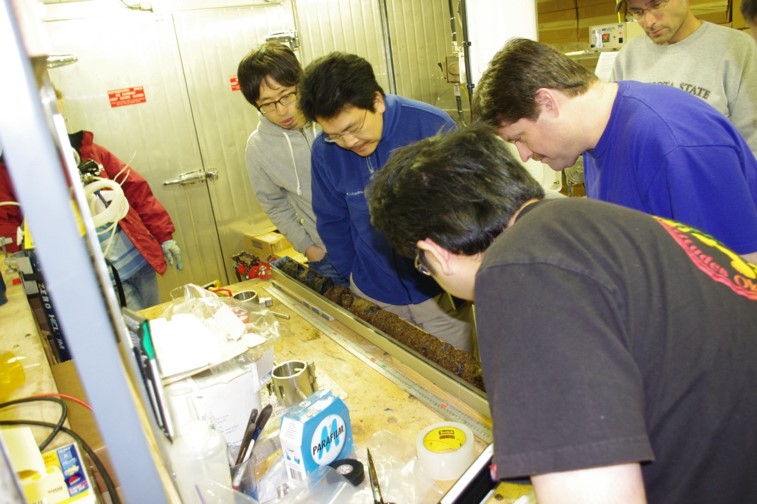Smectite-to-illite transformation: Microbes could hold key to oil exploration
“Diagenesis” is a process where minerals in a rock alter due to environmental changes, such as when the clay smectite transforms to illite in response to increased pressures and temperatures from burial in the Earth. However, while the smectite-to-illite reaction is known to occur by diagenesis, for over four decades now, researchers have looked for evidence of microbes driving this reaction in the natural environment. An international collaboration of researchers, including Prof Jinwook Kim from Yonsei University, South Korea, provide new evidence that the microbially-induced reaction may be possible. The insights from this study are valuable to not only research groups but also the oil and gas industry.
This research team analyzed core samples taken from the Nankai Trough in Japan during the International Ocean Discovery Drilling Program. The sample comprised a sediment column that was split into three sections, encompassing depths from 200 to 1150 meters below the seafloor. The team used kinetic modelling and electron microscopy, along with x-ray diffraction, to observe the varied structures and elemental compositions. Illite was found in the second section, where its formation from burial diagenesis (due to the temperature and pressure conditions at that depth) seemed unlikely. The team looked into this interval closely to see whether microbial activity was involved. Within it, three clay stages showed a series of smectite-to-illite transformation processes: a mixed layer of smectite and illite marked the transition, sandwiched between a smectite stage and an illite stage.
 A crossover meeting for the research team, held right after samples were collected. Prof Jinwook Kim (in blue, center) discussed the target depths for the core sediment.
A crossover meeting for the research team, held right after samples were collected. Prof Jinwook Kim (in blue, center) discussed the target depths for the core sediment.
Electron energy loss spectroscopy showed that oxidized iron had been reduced in the illite stage. This was consistent with results of a laboratory experiment where such iron reduction by microbes was seen to drive the smectite-to-illite reaction. Further, biogeochemical data also showed increased methane and low sulfates, suggesting that sulfate-reducing bacteria and methanogenic bacteria were active.
In this study, Prof Kim suggests the illitization was “a consequence of a bacterial survival and growth strategy at diagenetic temperatures up to 80°C within the Nankai Trough mudstone samples.” A certain kind of bacteria need to reduce the oxidized iron in smectite to gain energy for their growth and survival, and this reaction promotes the conversion of smectite to illite.
Illitization would normally be thought to result from burial diagenesis. However, as these researchers suggest, microbially induced smectite-to-illite reactions can occur in shallow, less mature sediments where the temperature and pressure conditions for this reaction are not met.
Understanding whether clay changes are biologically or physically driven is valuable to petroleum industries and geoscientists reconstructing thermal and tectonic histories. Identifying smectite and illite in sediments can tell petroleum exploration companies the maturity of sediments in the subsurface, giving them clues on whether oil may be found there. Prof Kim concludes, “these results have considerable implications for petroleum exploration, modification of fault behavior, and the understanding of microbial communities in the deep biosphere.”
Updated in July 2019
Recommended Articles
Professor Byeong-Su Kim
New study demonstrates that “deformable” electronics are not a stretch
Professor Yeonjin Yi